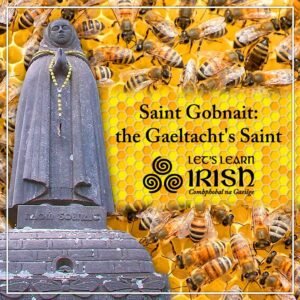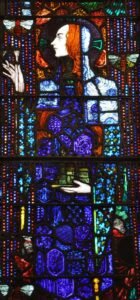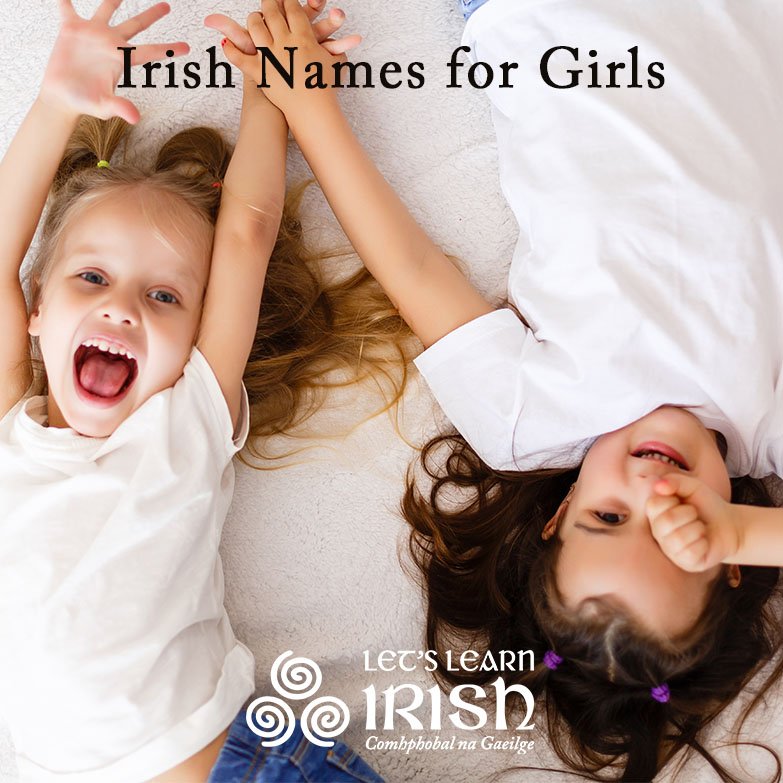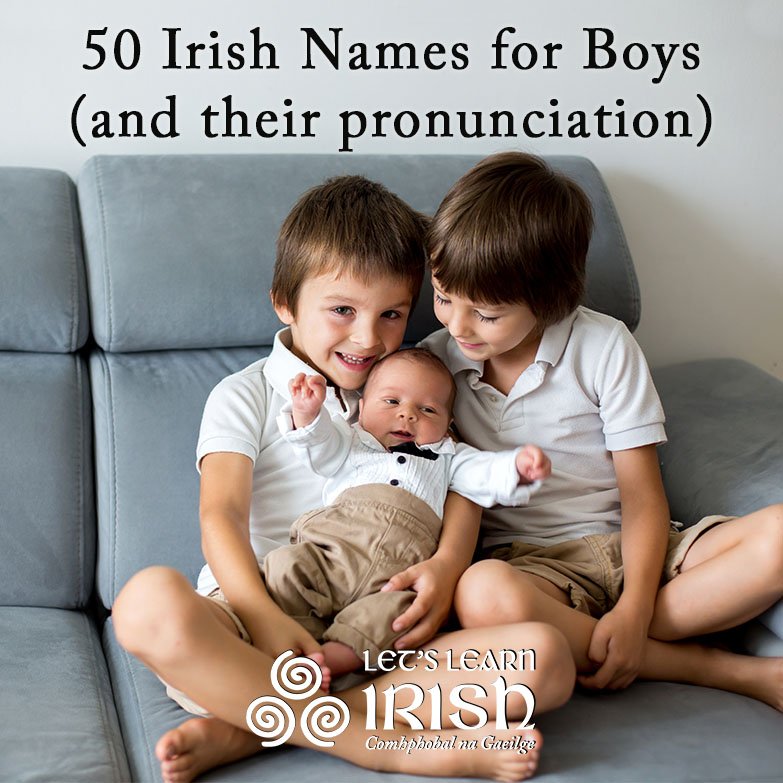Saint Gobnait: the Gaeltacht’s Saint
 On February 11th every year, people line up to visit the ruins in Dún Chaoin, situated in the Gaeltacht of County Kerry. The stones are believed to belong to a convent founded in the sixth century by Saint Gobnait (see this article for pronunciation), a figure unknown in some parts of Ireland but very popular in Irish-speaking areas.
On February 11th every year, people line up to visit the ruins in Dún Chaoin, situated in the Gaeltacht of County Kerry. The stones are believed to belong to a convent founded in the sixth century by Saint Gobnait (see this article for pronunciation), a figure unknown in some parts of Ireland but very popular in Irish-speaking areas.
But who is St. Gobnait, what part did she play in Ireland’s history, and why is she held in such high esteem in the Irish-speaking Gaeltacht regions of Ireland?
The History of Saint Gobnait

Unlike many of the celebrated Irish saints, there was no information about St. Gobnait recorded during the medieval period, and what we know about her comes from folklore.
Born in Country Clare in the sixth century, Saint Gobnait fled to Inis Oirr (Inisheer), the smallest of the three Aran Islands, to escape a family feud. One day, an angel appeared to her and told her to search the mainland for the place where she should “await her resurrection.” She would know they found the right place because there would be nine white deer standing there.
St. Gobnait travelled south once she reached the mainland, eventually finding the nine white deer waiting for her at what would later become the Gaeltacht village Ballyvourney, near the border between Cork and Kerry.
The Bees of Saint Gobnait
The legend of St. Gobnait is typically associated with bees. In Celtic tradition, bees were particularly revered, as it was believed that when a person died the soul left the body in the form of a bee or butterfly.
There are many stories in which Saint Gobnait harnesses the power of bees to impressive effect. In one instance, she purportedly cured a sick nun with her own honey. In another tale, she commanded bees to attack invaders and prevent cattle from being stolen, while in another she turned bees into soldiers to defend the area. With such an impressive history with bees, it is not surprising that Gobnait is also called the saint of apiculture.
Sites of Worship

The cult of St. Gobnait is particularly strong on Inis Oirr (where she fled after family troubles), Ballyvourney (where she lived the rest of her life), and in Dún Chaoin (where she helped found a convent). These are all Irish-speaking towns. In these areas it is not uncommon to find someone named Gobnait.
On Inis Oirr you can still find Saint Gobnait’s Church. Although the remains of the building only date back to the 11th century, it is believed to be the original site of worship established by Saint Gobnait in the sixth century. Even more impressive, it is said to contain her original bee cell.
Evidence of the saint’s following can be found in other parts of Ireland as well. For example, Cill Ghobnait (Kilgobnet), in County Kerry, bears her name, as does the town with the same name in County Waterford. In Cill Ghobnait, Waterford, there is also a medieval church dedicated to her.
Harry Clarke, the celebrated stain glass artist, portrayed her in a window at Honan Chapel at University College Cork. In Ballyvourney, Séamus Murphy created a statue of Saint Gobnait and her bees. A millennium and a half later, Ireland still honors this important female figure.

The Feast Day of Saint Gobnait
Until 1870, St. Gobnait’s well, located north of Ballyagran, Limerick, was visited and circled every year on February 11th by her followers. It was said that sometimes a white stag appeared at the well. Although the well has long since dried up, its location is still known.
Currently, the ruins in Dún Chaoin is one the most patronized sites on February 11th. It was said that in the past the local priest did not approve of the worship of Saint Gobnait there, but locals still celebrated her regardless.
Sometimes, those born on February 11th are named Abigal or Deborah, as they are the English equivalents of Gobnait. The translation of the names in their respective languages means “brings joy.”
Unlike Brigid, Saint Gobnait was not given a national holiday, and she is not known everywhere on the island. However, she is an important part of Ireland’s religious and cultural history. In particular, she is especially integral—and therefore still celebrated—in certain areas of the Gaeltacht. In fact, there would be no better place to be on February 11th, honoring an icon of Ireland’s past.
Join the online Irish community – beidh fáilte romhat!
Take a Course, join a Comhrá session or attend a Ceardlann.
For more, follow us @LetsLearnIrish – bígí páirteach!





